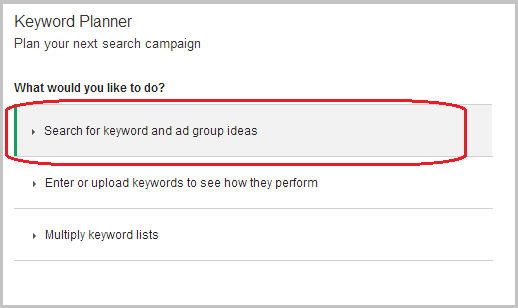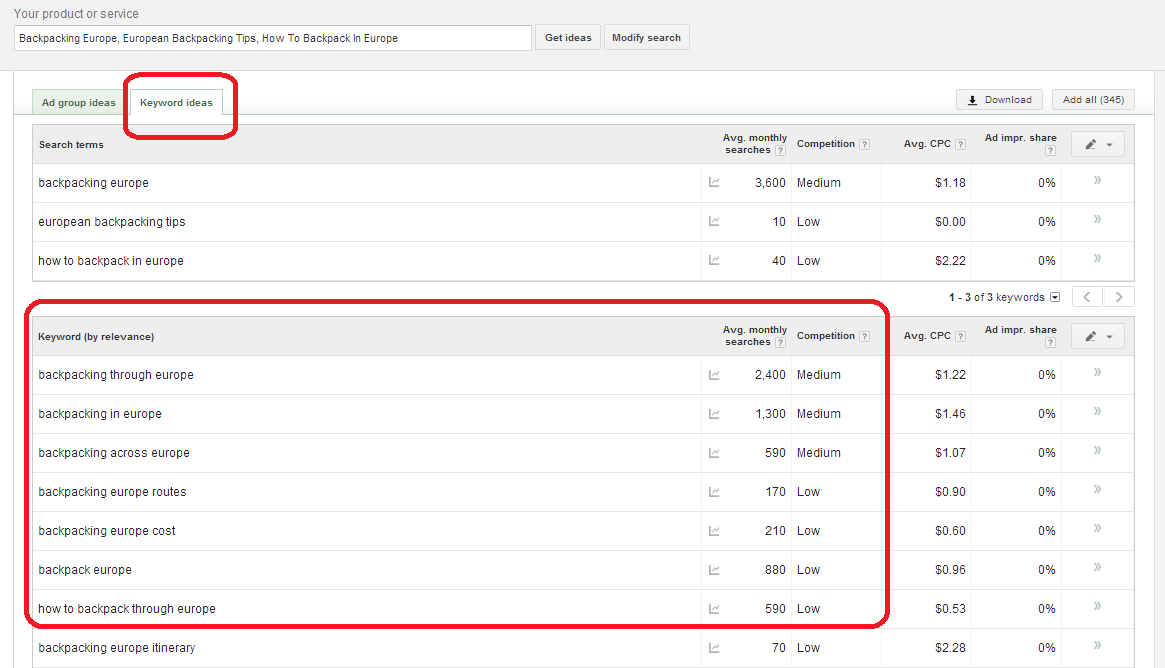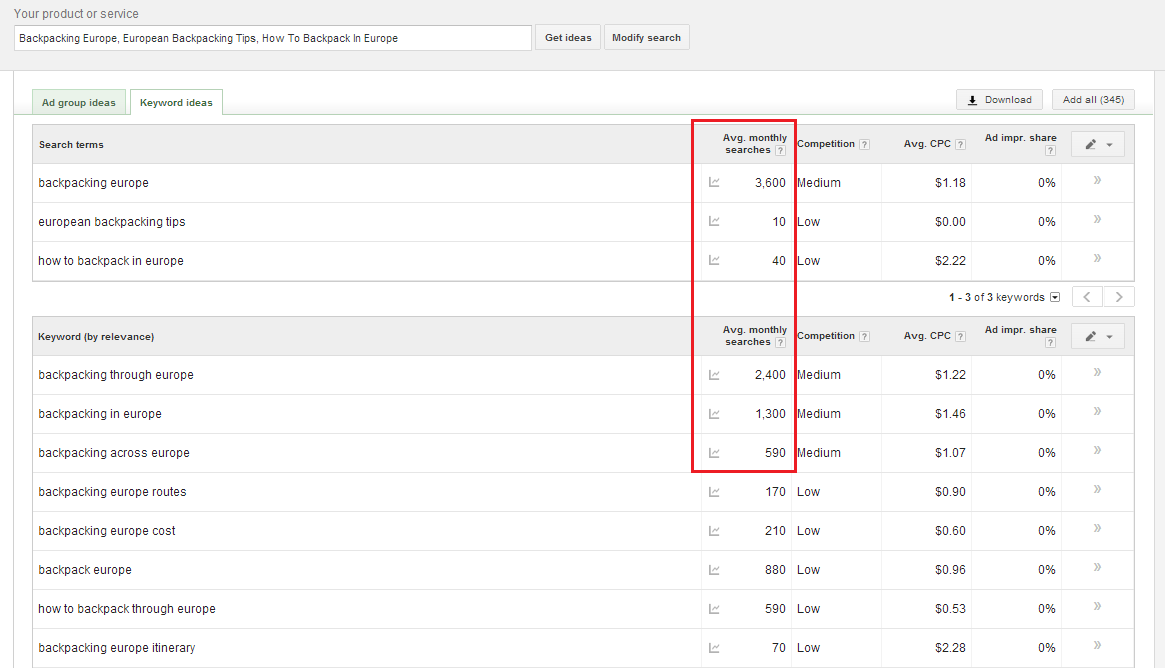This article goes back to basics to elaborate on six central pillars of keyword research, including:
1) Getting started with a brainstorm list
2) Acknowledging that you need a keyword research tool
3) Refining your list using suggested keyword phrases from an analysis tool
4) Verifying keyword phrase relevance
5) Looking at search volume to determine consumer demand
6) Analyzing the competitive space to make sure you and the searcher think the keywords mean the same things, and to decide if the space is too competitive
Big picture, the idea is to have extremely targeted keyword phrases that have a high search volume and low competition mix. In the most basic terms, this means — in a perfect world — your keyword phrases describes your content accurately, a lot of people are searching for the exact phrase, and there aren’t a lot of authoritative competitors who are also optimizing for that exact phrase.
Step One:
Most keyword research starts with a long list of hunches. Optimizers (even if it’s Joe from the mailroom doing your keyword research, once he starts working on SEO he technically becomes an “optimizer”) compile a list of words and phrases that they think their target demographic would use to describe their content, products, and services.Sometimes these lists are based on persona research, but most of the time these lists are compiled of phrases pulled out of thin air and largely represent the words the company hopes people use to describe their products and content, not the actual words the demographic is using.
Step Two:
In your keyword research process you’re going to analyze your brainstorm list of theoretical keyword phrases to determine which have the right mix of demand, attainability, and relevance to earn top SERP results.Since this post is about the data you pull from keyword research tools, not the tools themselves, I am going to keep this section high-level but I did want to make it clear that, unless you are a mind reader, you are going to need to use a keyword research tool to mine keyword data.
Everything covered in this article you can do at a basic level with Google.com and the Google AdWords Keyword Planner.

Step Three:
Nearly every keyword research tool will return suggested keyword phrases that are similar to your original phrase request. As mentioned, in the Google Keyword Planner these are called Keyword ideas. Since the first priority of the Keyword Planner is to support Google ads, the tool will return your results organized into two tabs: Ad group ideas, and Keyword ideas. Ad group ideas will automatically load first. To see a full list of keyword ideas organized by monthly average searches, click on the Keywords ideas tab.
In this image we see the Keywords ideas tab selected and a list of related keyword ideas circled in red.
Step Four:
When you start looking at keyword suggestions it can be easy to fall into a high-volume drunken haze and forget that relevance means directly descriptive of your content or product — not loosely related to the idea of the content or the general needs of the target demographic.Think to yourself: When the user searches this query, what are they looking for? What do they want? If they find my site, will their needs be met?
Step Five:
Looking at the Average Monthly Searches of a keyword phrase will tell you how many times per month an exact keyword phrase was entered into a Google search. Some tools like the Google Keyword Planner will only tell you how many times the term was searched in Google; other tools like the SEOToolSet® will tell you how many times the term was searched in Google.Step Six:
To get an idea of a keyword’s competitive space do a search for the phrase you’re trying to rank for. Just enter the phrase into Google as if you were the searcher.
What do you see?
Do you see results that offer products and services similar to yours? Do you see highly competitive big brands in the top ten? Do you see ten results that have nothing to do with your content?
If you see results that offer products and services similar to yours…
That’s good! That means you’re in the right space. Now look at who else is ranking for your keyword phrase. Who are your competitors for the top ten, or top three? What are they doing? What language are they using? One key to beating your competitors in the SERPs is doing more things right than them, so take some time to think about what the website in the spot you want is doing well and what they’re neglecting. Do they have the keyword phrase in their Title, Description, and body copy? Sometimes you have to click on all ten links to get a 360-degree idea of where you stand.
To get an even more detailed view of how competitive your keyword phrase is do a Google search for “Allintitle:keyword” where keyword is your keyword phrase. This will tell you how many web pages include this exact phrase in their Title tag, which will give you an idea of how many other web pages are optimizing for that exact phrase.
Do you see highly authoritative big brands in the top ten?
I know your mother always told you to never give up, but…sometimes you have to know when to fold ’em if the competition for a keyword phrase is just too steep. The number of clicks-throughs you’re going to see actively decays with every position you move away from spot number one, so if you have a slim to none chance of beating Adobe, Wacom, and Microsoft for spots one, two, and three I would recommend you spend your time targeting a different keyword phrase that you have a chance to rank highly for.
You will have see more traffic and conversions ranking number one for a keyword phrase that has 1,500 monthly searches, than being in spot 15 for a keyword phrase that has 10,000 monthly searches.
